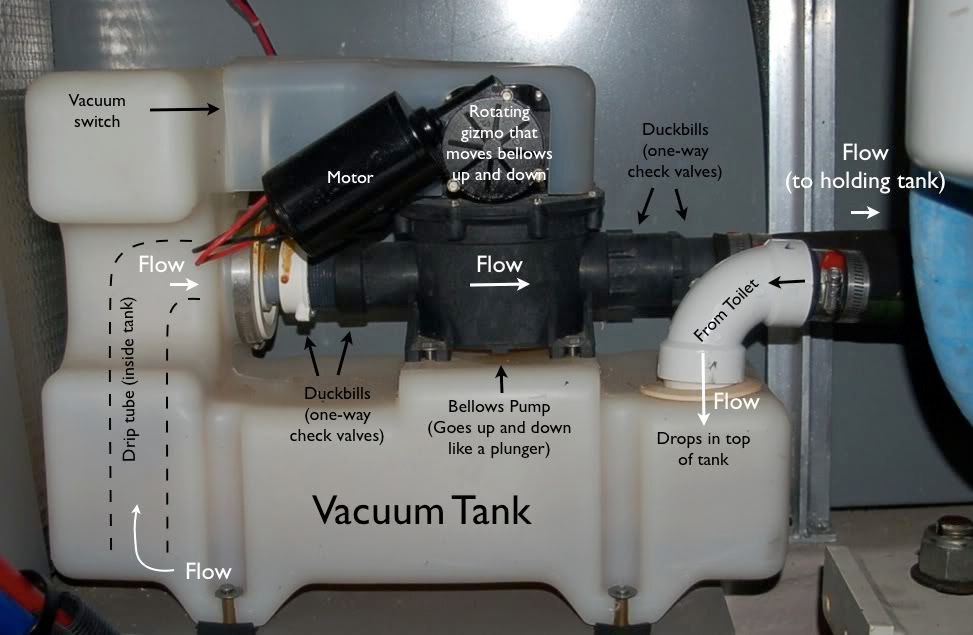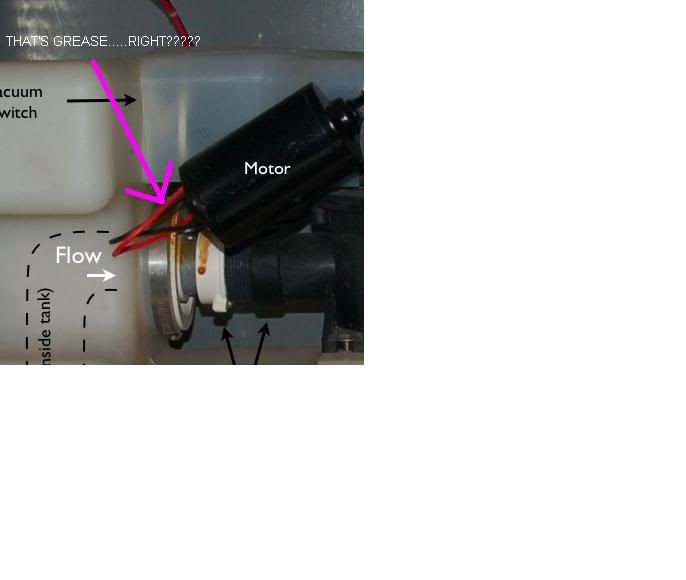The second thing I would try, prior to opening a sealed system full of human waste, is to utilize a pump out station to clear the lines and the vacuum pump.
My thought is that the holding tank vent fitting would be plugged, the tank would be filled, at least 3/4 full and the pump out station would be used to create a vacuum through to the head. The holding tank isn't designed to resist a vacuum so it should be full to prevent collapse.
The fresh water would be de-energized and de-pressurized, to prevent overflow at the head.
With vacuum at the pump out fitting, the head would be flushed and that vacuum would act on the entire system. It might be required to energize the head vacuum pump to get the duckbills going, so they don't obstruct flow.
The intent is to purge the lines and the pump, from the head to the pump.
Assuming that works, I would flush the line from the head to the pump w/ water from a garden hose so when the sealed system is opened it wouldn't be so disgusting.
Then the tank vent would be restored.
My thought is that the holding tank vent fitting would be plugged, the tank would be filled, at least 3/4 full and the pump out station would be used to create a vacuum through to the head. The holding tank isn't designed to resist a vacuum so it should be full to prevent collapse.
The fresh water would be de-energized and de-pressurized, to prevent overflow at the head.
With vacuum at the pump out fitting, the head would be flushed and that vacuum would act on the entire system. It might be required to energize the head vacuum pump to get the duckbills going, so they don't obstruct flow.
The intent is to purge the lines and the pump, from the head to the pump.
Assuming that works, I would flush the line from the head to the pump w/ water from a garden hose so when the sealed system is opened it wouldn't be so disgusting.
Then the tank vent would be restored.







